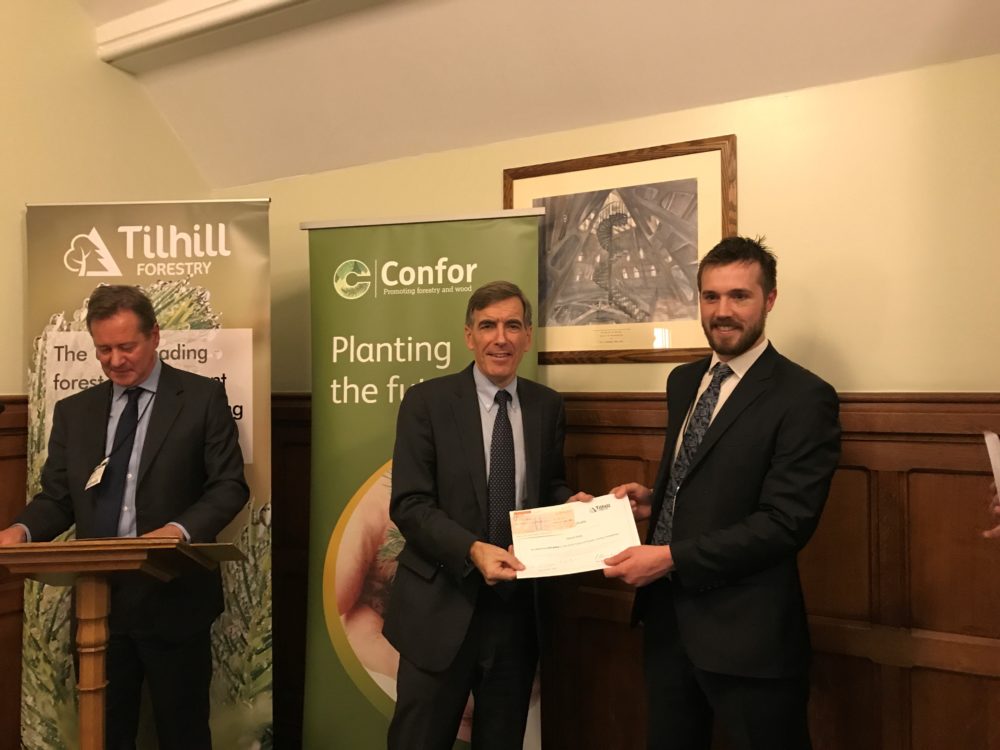How can forestry and wood processing help deliver a Green Brexit and a more sustainable UK society?
Brexit could offer the opportunity to end our overreliance on one non-native species, it presents a chance to use the momentum of change from EU legislation to educate and adapt.
As an industry, UK forestry is geared for one species more than any other: Sitka spruce. Sitka spruce is disease resilient, hardy, fast growing and strong. Post-war Britain was in desperate need of timber, so we planted a lot of it. Sawmills eventually became geared towards it and demanded more. As an industry we invested in it. We improved the genetics of it and compiled libraries on best practice and efficient silviculture. In a nutshell — we got very good at growing it. This in turn decreased the demand for other species and promoted the relative price of Sitka. In order to stay competitive, the private market has had to push the establishment of Sitka spruce to generate more income for its commercial clients and thus win more work over its competitors.
This, of course, is not new. Any private market is driven by profit. That’s capitalism, and this by itself is not an issue. The problem is that we are dealing with an asset class that has ramifications far beyond a cashflow. Climate change has brought a steady increase in pests and diseases to our industry. We are fortunate that Sitka has remained steadfast despite being the prominent feature of most monocultures. It seems inventible that one day this will change, and Sitka becomes infected, potentially devastating our industry both economically and ecologically. Such a catastrophe would pull the rug out from under our feet and destroy everything the industry has worked so hard to achieve. Young foresters look forward with trepidation: hoping to strike a balance in securing a future by attracting investors using sound financial projections with the confidence that we have the resilience to deal with global warming and the many challenges it brings.
Today we are in a heavily regulated industry attempting to force a machine built around Sitka spruce to produce anything but. EU legislation has created blanket policies for the industry to adhere to. On the one hand, this forces commercial forests to protect sensitive habitats. But on the other, it provides colossal bureaucratic and financial barriers which cripple many perfectly sensible schemes from taking flight. A well-designed forest should not only provide open-access recreation, landscape amenity, biodiversity, carbon sequestration, pollution absorption and water supply but also profit. Without profit we will lose the initial investors who are ultimately footing the bill for the forest to be established in the first place.
The answer may lie in developing demand for diversification. If the market for a variety of timber products was there, then we would see a shift in supply away from monocultures. True, we are still likely to see the “division of labour” amongst forests —but perhaps matching the tree to the site rather than matching the site to the tree may occur. After all, Sitka isn’t the only species that can produce construction-grade timber. A paper written by D.Gil-Moreno, D. Ridley-Ellis and P. McLean (2016) highlights that timber produced from noble fir, Norway spruce, western red cedar and western hemlock grown in great Britain is strong enough to meet construction standards. It’s just relatively hard and expensive to do it compared to Sitka spruce.
The question therefore becomes; how to create demand for a diversity of timber. Which is difficult. Education is likely the best and most troublesome answer. That is; education for all stakeholders from grower to user. Those with the greatest knowledge should be enabled to educate others on why buying that bit of western red cedar for some construction is a good idea. Of course, this burden should fall on all shoulders from private to public and as always, there will be a cost.
If the sector, both forestry and wood processing, was to continue promoting what is being done and what can be done, then we may see a change in the demand. After all, we have come a very long way since the humble beginnings of the Forestry Commission in 1919 and should be very proud of that. UKFS, UKWAS, ESC modelling and many other facets of commercial forestry encourage sensitive forestry establishment that can provide massive economic results. Scotland alone sees circa 1 billion pounds (gva) per annum from forestry. This progress has been alongside establishing forests with more diversity then we’ve seen in decades. A high demand for these diverse conifers would push the industry to work harder to continue establishing them and drive up their value to investors.
Brexit will, therefore, present us with an opportunity. Less EU legislation alongside a genuine desire to establish diverse forests would streamline the bureaucratic process and enable our sector to establish a forest that can be an ecological, economic and social success. A reduction in barriers for establishment will attract new investors and present greater opportunities for further woodland creation. A streamlined body of wood processing and forestry can help deliver education and a unified message of the benefits in demanding a diverse timber supply. The bottom line is “a wood that pays is a wood that stays” and currently; Sitka pays.
David Pelly – Investment Forester.
This essay was written as part of the Confor essay competition. David Pelly received third prize presented by David Rutley, Environment Minister at the Department for Environment, Food and Rural Affairs (Defra) at The Houses of Parliament in November 2018.



